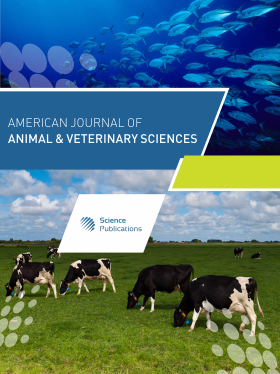Wound Healing Process of Uncomplicated “Rusterholz” Ulcer, Following Treatment by Wooden Block and Hoofgel® in Bovine Hoof: Histopathological Aspects
- 1 The University of Tehran, Iran
- 2 Medical Laboratory of Pathology, Iran
Abstract
A broad and very detailed histopathological knowledge on cutaneous wound healing particularly in human skin is available, but few studies have documented this event in bovine claw sole ulcers. It seems the mechanism of wound healing might be basically the same followed by second intention healing which is finished in a period of time by formation of granulation tissue in damaged corium and subsequently completed by keratinized epidermis.This study was aimed for more histopathological information when wooden block and solka Hoofgel are applied as a treatment device for uncomplicated sole ulcers. Sixteen milking cows (age 2-5 years) which suffering from uncomplicated sole ulcer, following treatment by claw block (wooden block) on the healthy claw to reduce weight bearing on the affected claw and topical solka gel on affected claw from a farm in the vicinity of Tehran were considered. In all cases Lameness score was 3 (1-3 are ordinal scale), Lesion score was assessed 4 (1-4 are ordinal scale) and the mean lesion size was 16× 9 mm. Regardless of the location’s of the sole ulcers, The sampling sites were settled at caudo-medial part in the center sole namely “Specific ulcer site”. 16 safe ulcers in lateral claw of left rear foot, contained the corium and the part of the epidermis were collected in three time intervals 1,10,21 days and examined histopathologically. These samples were fixed in 10% buffered formalin and embedded in paraffin. Sections (3-5 μm thick) were taken from the paraffin-embedded tissue and stained with Hematoxylin and Eosin. Inflammatory changes were evident on day 1 because of disruption of the superficial dermis vessels. Some areas and horn layer surrounding the ulcer shows dilated tubules which were parallel to the sole and microcracks extending to the stratum spinosum. In day 10,the progressive epidermal regeneration from the edges of the lesion and reattachment between the over growing epidermis and the base membrane were seen. The proliferation in connective tissue was accompanied by the formation of new dermal vessels. The vascularization in the dermis was completed on day 21. The lesion was covered by moderate differentiated cornified epidermis. The dermal papillae showed marked mononuclear cells infiltrate. From these histopathological changes which is occurred during these stages of healing, it seems that by applying wooden block to the healthy claw to reduce weight bearing on the affected claw and using Solka hoofgel® which is a product, has some ingredient such as zinc and some organic acid, the time of wound healing process was decreased. So use of a modified treatment, influence on the healing process in macroscopical and histopathological aspect.
DOI: https://doi.org/10.3844/ajavsp.2006.27.30

- 6,128 Views
- 6,364 Downloads
- 12 Citations
Download
Keywords
- Wound healing process
- histopathological aspects
- horn layer
- ulcer
- bovine hoof
